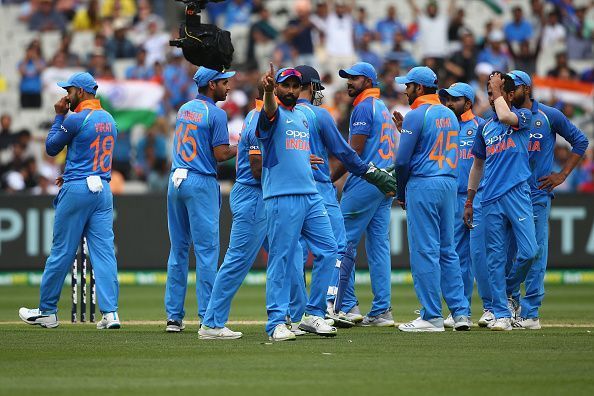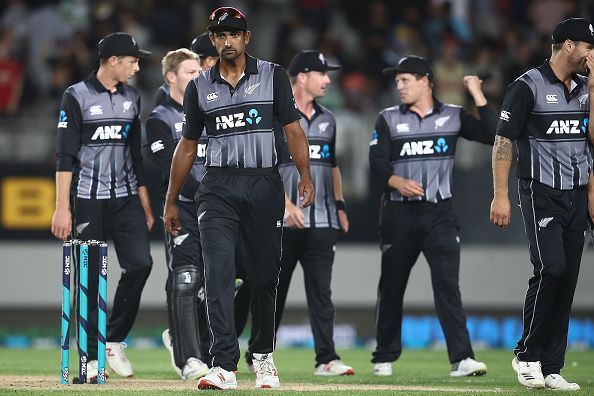
India vs New Zealand 2019: India match up against a similarly styled team

There’s no denying the fact that India vs New Zealand is a highly anticipated ODI series. India along with England, start favorites to lift the World Cup while New Zealand, the perennial dark horses in major tournaments, will yet again enter the tournament with a very strong and capable team.
India and New Zealand have 10 and 8 ODI matches respectively to play out and fine tune their process before the curtain raiser in England. While all the context around it makes it a high profile series, what also makes it more interesting is the fact that it is a match-up between two very identical teams. For the very first time perhaps in the lead up to the World Cup India are up against their replica.
Post the finals of the Champions Trophy, India decided to do off with their regular spinners in Jadeja and Ashwin. Instead, they chose to unleash the two-pronged wrist spin attack of Kuldeep Yadav and Yuzvendra Chahal on the opposition with a view of picking up key wickets in the middle overs. The move has paid rich dividends ever since. So much so that the approach along with England’s all aggressive batting, is now being hailed as the two most revolutionary changes in the ODI format in recent times.
Teams across the world have been trying to adopt to one of these templates. And quite expectantly most teams have tried to learn, adopt and execute the English standard. The reason is fairly obvious as well. The English approach is far more straight forward and cut throat.
Most teams, including South Africa and Australia, are blessed with fairly capable all-rounders and pinch hitters. It is the batting skills of these players that they hope to capitalize on in a similar vein as the English. Owing to their batting might, the English put pressure on the opposition with huge totals if they bat first, if not they put pressure on the opposition under pressure because of the feeling that no total is going to be big enough for them.
The Indian standard though is a lot more complex. It is a very peculiar script where more than half the matches are won within the first half of the match. If they bowl first, 40 out of the 50 overs are sent down by strike bowlers who are capable of picking up wickets at any stage in the game.
30 of these, by bowlers who are in the ICC top 10 ranking for bowlers. They do not always leave a large score for the batsman to chase. If they bat first, one among their top 3, (all of whom are in the ICC ODI top 10 ranking for batsmen including the number 1 and 2) bats through the inning.
And while they do play the role of the anchor at times, if they managed to bat through, they end up with strike rates significantly higher than 100. And all these without bringing the likes of MS Dhoni and Dinesh Karthik into the picture.
This difference is exactly what will put India at par with England as favorites as they go into the World Cup despite the obvious home advantage that England hold. And this difference is the reason why this match-up between India and New Zealand become all the more important.
Not all teams have been blessed with two very capable leg spinners like Chahal and Kuldeep. Couple that with Rohit Sharma, Virat Kohli, Jasprit Bumrah (though rested for this series) and Bhuvneshwar Kumar and you should easily have the best ODI team in the world.
One that can beat any other. But not New Zealand. New Zealand presents a unique case. In Todd Astle and Ish Sodhi, they have two capable leg spinners. Kane Williamson is the nearest thing there is to the versatility, consistency and adaptability of Virat Kohli. Martin Guptil can on his day give Rohit Sharma a run for his money.
And while the Hitman holds the record for the highest individual ODI score, Guptil holds the record for the highest ODI score in World Cups. Add to this the explosive southpaw in Colin Munro, the experienced Ross Taylor and the pace bowling duo of Tim Southee and Trent Boult and we know why exactly India and New Zealand are on most fronts a replica of each other.
Over the past few years, India have dominated the ODI format. A win percentage of 60+ since the WC in 2015 is a testimony to the fact. But for once, in an unexpected place, India have met their replica. And it will be interesting how they face up against their own script.
